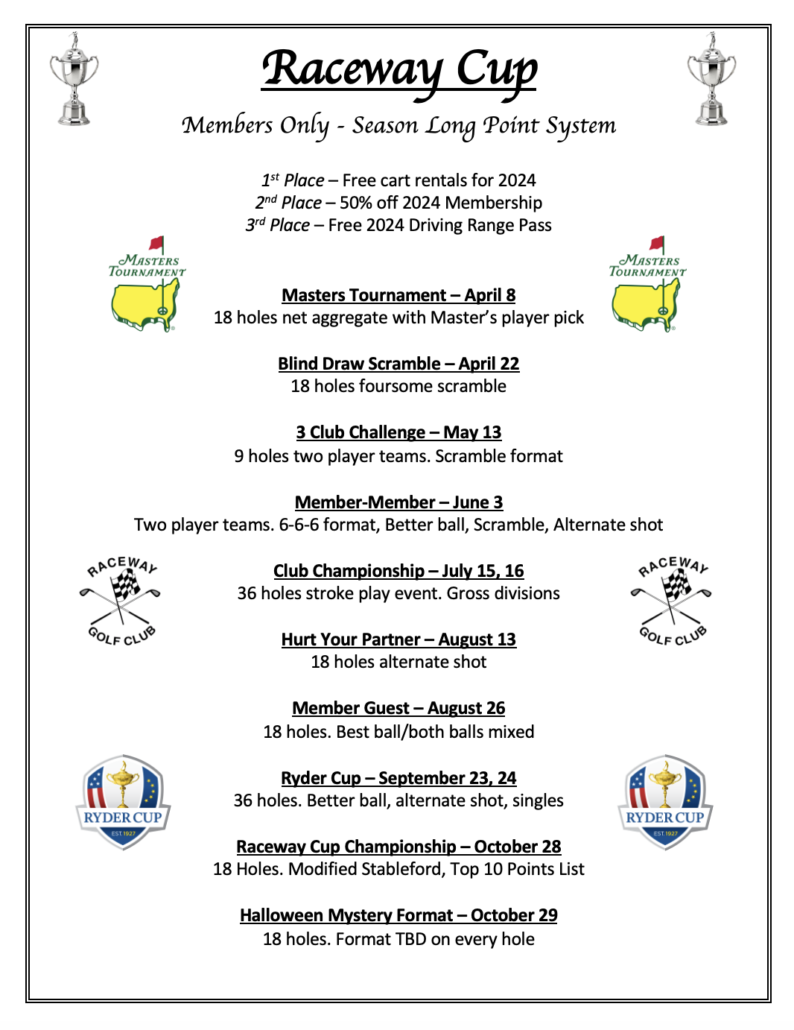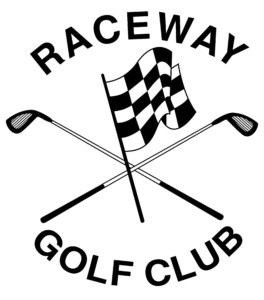
Raceway Golf Club
HOURS OF OPERATION
In Season (April thru October)
Mon to Fri open 7am to 1 hour before sunset
Sat, Sun & Holidays open 6am to 1 hour before sunset
Off Season (November thru March)
Course will open at 9am to 3pm daily, weather depending!

